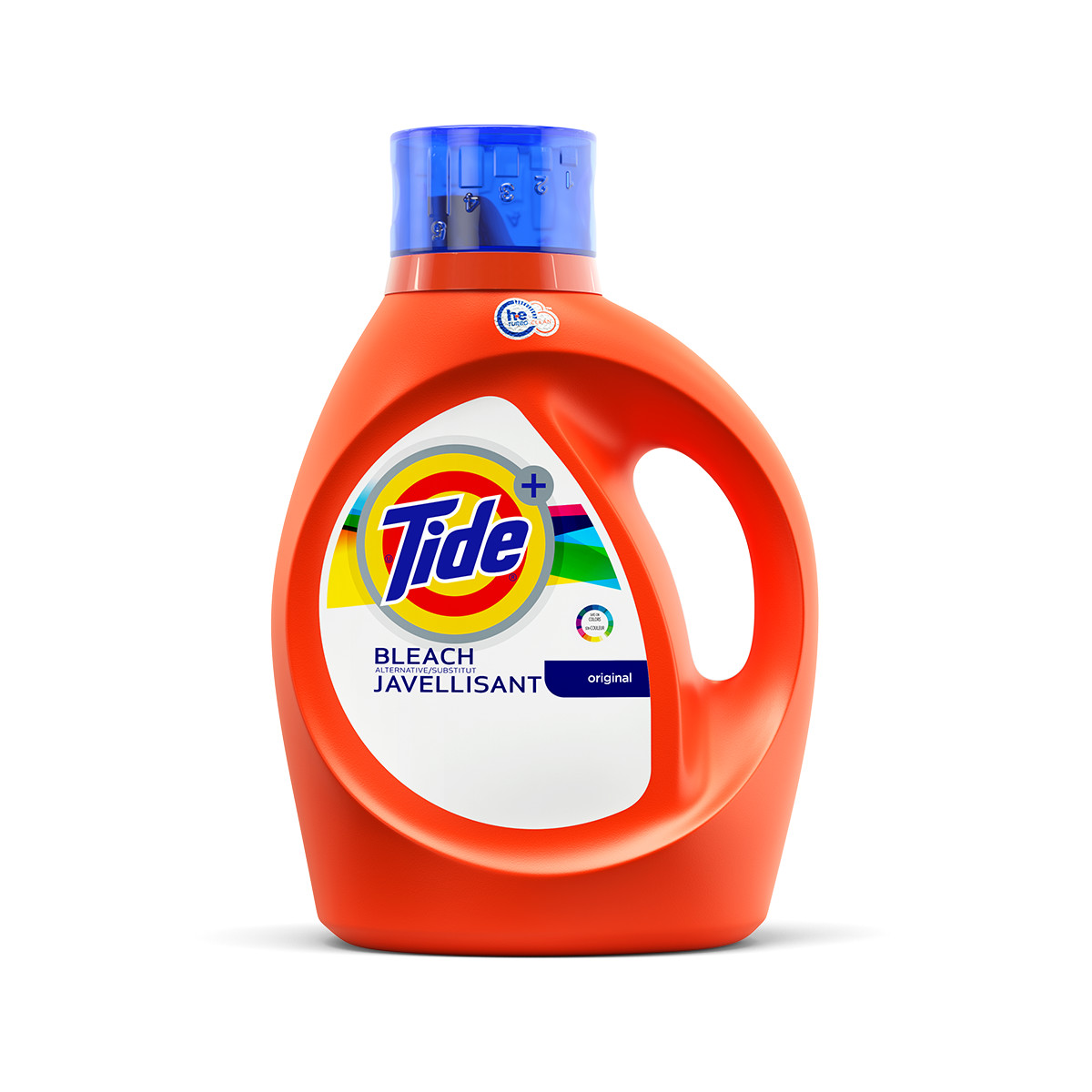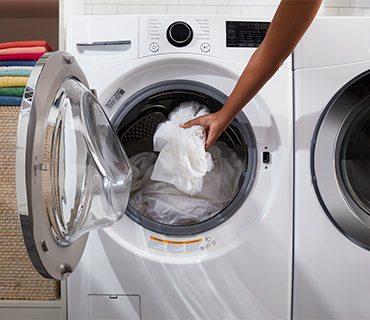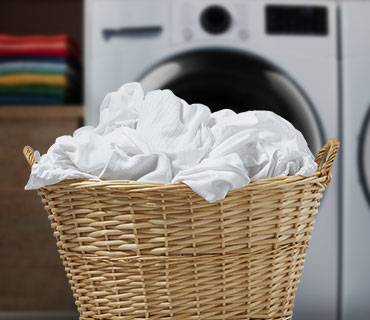How to Separate Your Laundry for the Best Results
We know how frustrating it is when you pull your whites out of the washing machine only to find a stray red sock snuck in with them and turned everything pink. Follow our simple tips for sorting laundry , and say goodbye to laundry accidents forever.
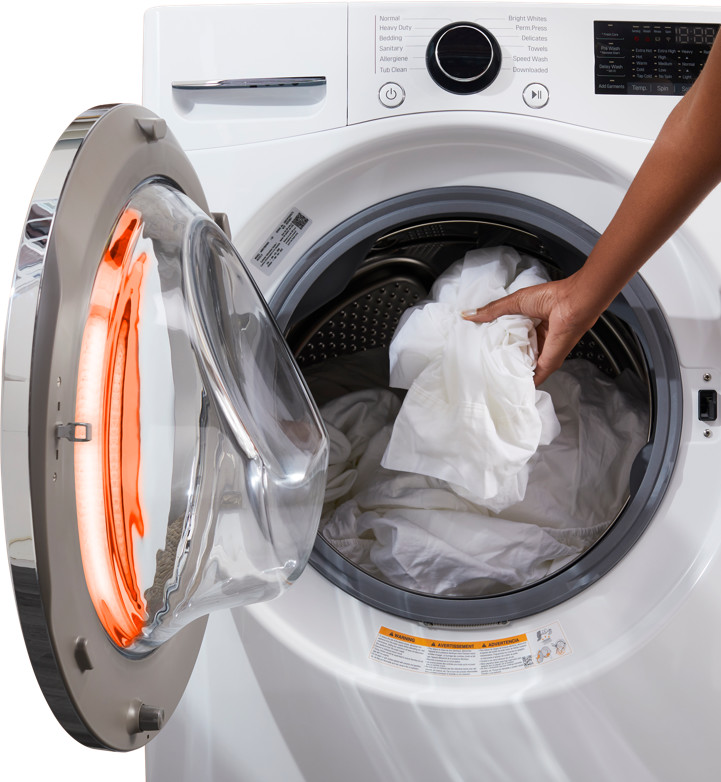
How to Separate Laundry
Step 1
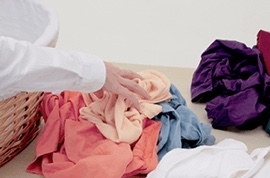
Sort clothes according to fabric type and color shades to avoid damaging finer fabrics and accidentally mixing colors.
Step 2
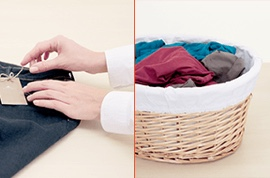
New items and darkly colored items may bleed, so wash them separately and turned inside out.
Step 3
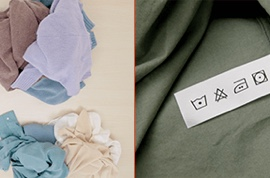
Delicates should be washed on a delicate cycle or by hand. Always wash according to the garments' care label instructions.
Sorting Clothes for Laundry Success
It may be easy to throw a load of mixed laundry into the machine, but if you don’t want everything to turn an odd shade of pink or grey, it's best to learn how to separate laundry. If you only have a small amount from one group, then don’t be tempted to put it in with another. Save it for a full load.
Sort Clothes by Color
Clothes with deep colors are more likely to bleed dye when washed. To avoid damaging other clothing, sort laundry according to color, grouping dark, medium and light colors separately. Wash deep colored clothing like indigo jeans or red sweatshirts by themselves for the first few washings.
For dazzling whites - use a detergent containing bleach, such as Tide Plus Bleach Powder Detergent or Tide Plus Bleach Alternative Liquid.
For bright colors - use a detergent without bleach, such as Tide Plus Coldwater Liquid, Tide Plus A Touch of Downy.
Sort Clothes by Fabric Type
Wash heavier items, like towels, seperately from lighter weight clothes to prevent abrasion and damage to finer fabrics. For the same reason, separate clothing with zippers and buttons from knits and lingerie. If an item sheds lint, wash it seperately from microfiber, corduroy or other fabrics that attract lint.
Another reason to separate laundry by fabric type is because heavier items take longer to dry than lighter ones. By drying them together, the lighter items are over-dried, which stresses the fibers, and heavier items are often left damp.
To care for delicate items, wash on a gentle cycle in a mesh garment bag.
Sort by the Amount of Dirt on Items
Very dirty or stained laundry should be washed separately on a longer, heavy-duty cycle. This provides the agitation needed to get rid of heavy dirt.

Turn Your Clothes Inside Out
This will protect them during the wash. It also stops jeans turning white at the seams.

Pre-treat Your Clothes
Before Washing. There is no need to worry about getting tough stains out of colored loads. Pre-treat heavy stains to boost the power of your detergent. Find out how to pre-treat stains for the best results.

Choosing the Right Laundry Basket
Use a partitioned laundry basket – it’ll save you time sorting it all out later.
In case someone in your household places something in the wrong section, check the garments' labels for the manufacturer’s washing recommendations.
If in doubt, test an item for colorfastness by applying warm water to an inconspicuous part (for instance, the inside of a hem), then press with a warm iron between two pieces of cloth. If any color leaks, it’s not colorfast.
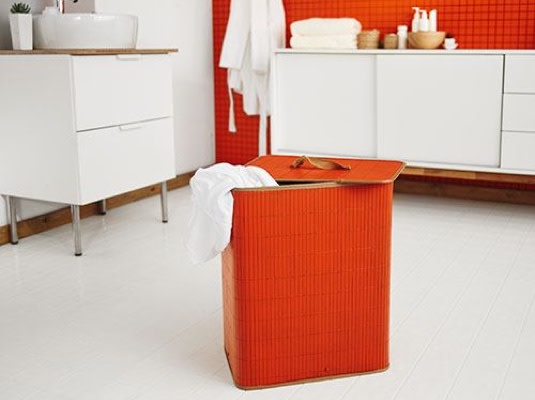
Related products
Tide Plus Bleach Alternative Liquid Laundry Detergent
Tide Plus A Touch of Downy Liquid Laundry Detergent




